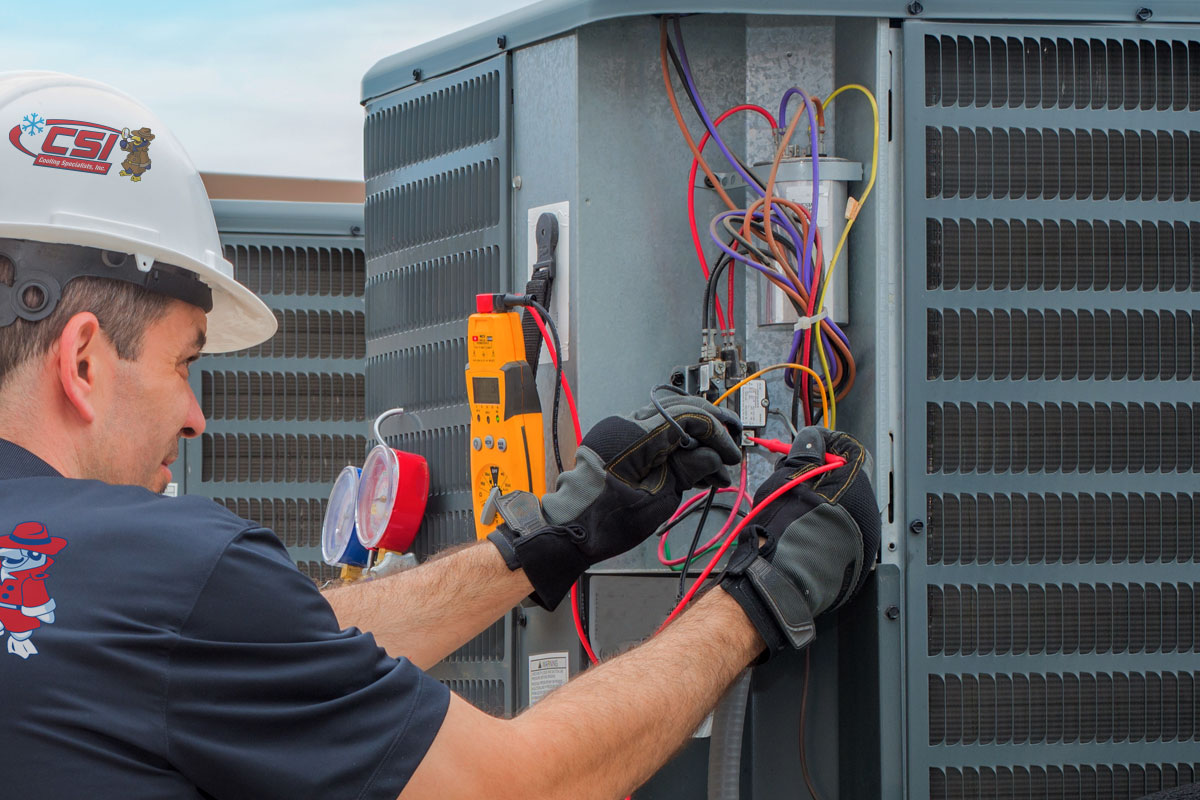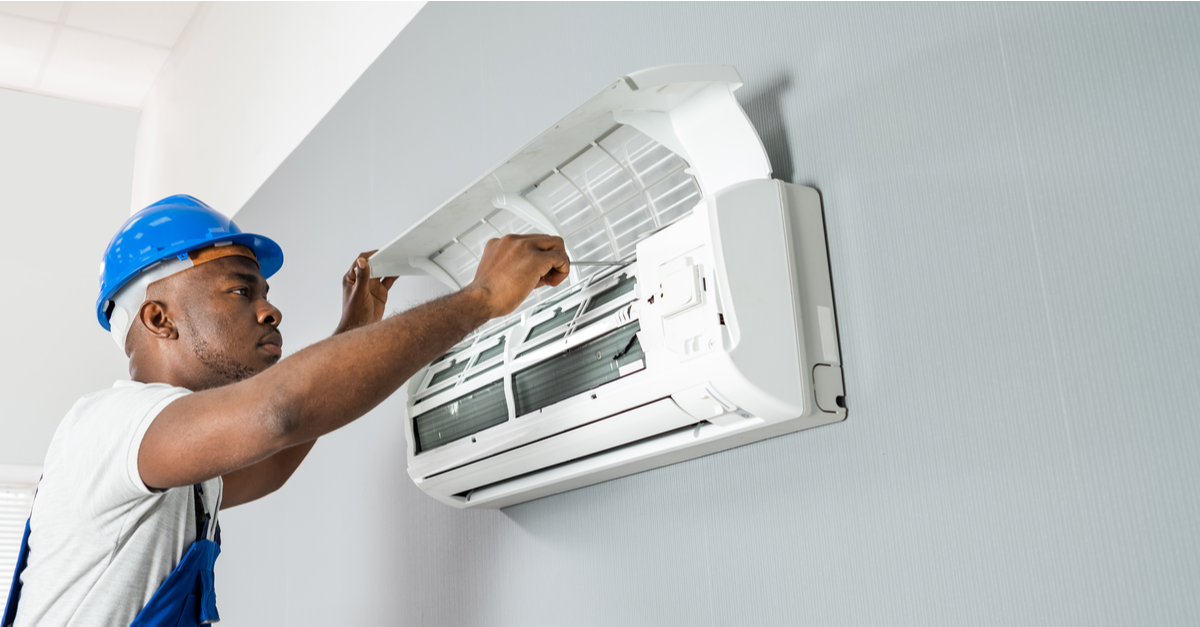Cooling Installation for Historical Homes: Obstacles and Solutions

Taking into consideration the complexities of cooling old homes, cooling installment for historical homes presents strange predicaments.
Just how can you protect the stability of duration residential or commercial properties while guaranteeing top-notch indoor convenience?
Untangle the enigmatic interaction in between modern air conditioning comforts and timeless building treasures in the following discussion.
Trick Takeaways
- Maintain historical beauty with proper products and expert advice.
- Update electric systems for modern HVAC compatibility and safety and security.
- Discover compact air conditioning choices like mini-split or high-velocity systems.
- Improve energy performance via insulation, smart thermostats, and maintenance.
Historical Considerations
When taking into consideration the installation of cooling in a historical home, it is very important to understand the distinct historical facets of the building. Reconstruction obstacles typically occur when attempting to blend modern convenience with preserving the historical stability of the home. The architectural effect of mounting a/c have to be carefully examined to ensure that the system does not diminish the home's original design.

Preserving the historic charm of a home while updating its amenities can be a fragile balance. Remediation difficulties may include locating means to conceal ductwork, locating very discreet locations for the outside device, or adapting the system to fit within the existing building restrictions. It's vital to deal with professionals experienced in historic home remodellings to browse these challenges efficiently.
The architectural effect of adding air conditioning can be substantial. Cautious factor to consider needs to be offered to just how vents, thermostats, and various other components will certainly mix with the home's visual. Making certain that the installment does not compromise the historical honesty of the building is critical when taking on such a task in a historical home.

Examining Electrical Equipments
To assure a successful installment of air conditioning in a historic home, assessing the compatibility and ability of the existing electric systems is crucial. ac tune up Prior to waging the installation, it is essential to assess whether the electrical system can take care of the additional lots that the cooling unit will certainly present. In many cases, upgrading the voltage of the electrical system might be essential to make certain it can power the new air conditioning system efficiently.
System compatibility is an additional essential factor to review when evaluating the electric configuration of a historical home. Older electric systems may not be compatible with modern cooling systems, which might bring about breakdowns and even position safety threats. Making certain that the electrical system is compatible with the new air conditioning tools will help avoid any type of prospective issues down the line.
Room Restraints and Ductwork Options
When managing minimal area in your historic home, you could wish to explore ductless mini-split systems or high-velocity heating and cooling systems as practical alternatives. These systems can provide reliable cooling without the requirement for extensive ductwork, making them appropriate for older properties with area restrictions.
Ductless Mini-Split Solutions

Taking into consideration space restraints and numerous ductwork alternatives, ductless mini-split systems supply a flexible solution for a/c installment in historical homes. These systems offer substantial energy savings compared to conventional cooling and heating arrangements, as they enable zoning, suggesting you can cool details locations only when needed.
The layout adaptability of ductless mini-split systems is also helpful for historical homes, where protecting the initial aesthetic appeals is essential. Without any ductwork called for, setup is less invasive, making it a recommended option for older homes with limited space or where maintaining building honesty is a priority.
Ductless mini-split systems are effective, adjustable, and blend effortlessly into historical interiors, using a sensible and energy-efficient air conditioning option.
High-Velocity Heating And Cooling Systems
High-Velocity a/c systems supply a small and reliable air conditioning solution for historic homes with limited room and details ductwork requirements. When considering these systems for your historic home, below are 4 bottom lines to keep in mind:
- Mini air duct systems: High-Velocity a/c systems utilize small air ducts that are a lot smaller sized in size compared to typical ductwork, making them optimal for homes with space constraints.
- Portable design: The compact style of these systems allows for less complicated setup in older homes where area is limited.
- Reliable air conditioning: In spite of their little dimension, high-velocity systems are capable of supplying effective air conditioning throughout your historic home.
- Versatile setup: These systems offer various ductwork choices, such as versatile tubing, which can be routed with existing wall surfaces without significant remodellings.
Energy Efficiency Solutions
To boost the power performance of your historic home, take into consideration updating the insulation and incorporating a wise thermostat. These options can help manage interior temperature levels successfully and reduce power usage, making certain a much more lasting and cost-efficient cooling system for your special building.
Make these upgrades part of your air conditioning installment plan to make the most of convenience while decreasing ecological impact.
Insulation Upgrades
Updating the insulation in your historic home can substantially boost its energy efficiency and general comfort while preserving its distinct character and appeal. Take into consideration these crucial techniques for insulation upgrades:
- Evaluate Window Treatments: Mounting energy-efficient window treatments like insulated drapes or blinds can aid minimize heat transfer and boost the general performance of your home.
- Boost Roof Covering Insulation: Upgrading roof insulation is important for much better temperature law within your historical home, assisting to keep it cool in the summertime and warm in the wintertime.
- Seal Gaps and Cracks: Recognizing and securing gaps and splits in your house's walls, floors, and ceilings can prevent air leakage and enhance insulation efficiency.
- Consider Attic Insulation: Correctly insulating your attic can significantly reduce heat loss and boost the general power performance of your home.
Smart Thermostat Integration
Considering the energy-saving advantages of insulation upgrades in your historical home, incorporating a wise thermostat can better improve your power efficiency services.
Smart thermostats offer accurate control over your home's temperature level setups, causing significant energy savings. By enhancing heating and cooling timetables based upon your choices and day-to-day routines, you can lower power waste and lower utility expenses.
Additionally, wise thermostats provide remote access, permitting you to readjust the temperature level setups from anywhere utilizing your smartphone or computer. This attribute enables you to ensure your home is successfully warmed or cooled down also when you're away, maximizing comfort while decreasing energy consumption.
Welcoming smart thermostat technology is a functional action towards boosting the power performance of your historical home.
Preservation Methods for Air Vents
Preserving the integrity of historic air vents is important throughout the installation of cooling systems in older homes. When it involves preserving the architectural credibility of your historical residential or commercial property while updating its comfort, take into consideration the adhering to conservation techniques for air vents:
- Restoration Techniques: Carry out cautious restoration methods to protect the initial design and material of the air vents, guaranteeing they mix perfectly with the historical visual appeals of your home.
- Get in touch with Experts: Inquire from specialists experienced in historical preservation to guide you on the very best methods for keeping the air vents' building stability.
- Custom Solutions: Explore customized services that accommodate the unique characteristics of your historical air vents, permitting modern-day upgrades without compromising their original appeal.
- Period-Appropriate Materials: Go with period-appropriate materials when repairing or replacing air vents, guaranteeing they line up with the historical period of your home's design.
Professional Tips for Effective Installment
When installing cooling in historical homes, guaranteeing effective installation requires adhering to professional tips for a smooth integration with your residential property's unique functions.
Begin by thoroughly assessing guarantee coverage offered by different a/c firms to shield your financial investment in instance of breakdowns. Get all necessary permit requirements from regional authorities prior to beginning any type of installment job to prevent lawful issues down the line.
Spending plan preparation is crucial; see to it to represent any kind of unforeseen expenses that might arise during the installation procedure. In addition, establish upkeep routines from the beginning to keep your brand-new system running efficiently for several years ahead.
Often Asked Questions
Can A/c Be Set Up in a Historic Home Without Compromising Its Historic Honesty?
Yes, you can mount air conditioning in a historic home without jeopardizing its historic integrity. Conservation methods can be used to perfectly incorporate modern-day cooling systems while preserving the home's initial charm.
By purposefully putting ductwork and devices out of sight, you can assure that the historic features stay prominent.
It's possible to enjoy the conveniences of a/c in a historical home without sacrificing its one-of-a-kind personality.
Are There Unique Considerations to Bear In Mind When Setting Up Cooling in a Historic Home With Outdated Electric Equipments?
When updating wiring in a historic home with out-of-date electrical systems, special factors to consider are necessary. Preservation techniques should be made use of to preserve the historical stability of the home.
It is very important to collaborate with professionals who comprehend the fragile equilibrium in between modern-day conveniences and maintaining the home's distinct personality.
Exactly How Can Ductwork Be Inconspicuously Set Up in a Historic Home With Limited Area?
When managing minimal area in a historical home, you'll require to contemplate discreet style and space-saving options for installing ductwork. To preserve historic preservation while appreciating contemporary comfort, discover innovative means to put ducts away without endangering the home's aesthetic appeals.
Check out slim duct alternatives or ponder using existing tooth cavities for duct positioning. By blending functionality with subtlety, you can guarantee a seamless assimilation of a/c in your historical home.
What Are Some Energy-Efficient Options for Cooling in Historic Homes?
When searching for energy-efficient options for cooling in historic homes, think about making use of energy-efficient zoning and mini split systems. Energy-efficient zoning assists control temperature levels in various zones of your home, conserving power.
Mini divided systems are a terrific option for older homes with limited space, using both cooling down and warming functions. By choosing these remedies, you can maintain your historic home comfy without compromising on power efficiency.
Are There Details Preservation Techniques That Should Be Made Use Of for Historic Air Vents During Installation?
When installing cooling in historic homes, preservation strategies play a crucial duty. It's important to make certain that the existing air vents are thoroughly incorporated right into the brand-new system to preserve the historical visual of the home.
Final thought
When mounting air conditioning in historic homes, it's important to consider the special obstacles such as maintaining the home's historical honesty, assessing electrical systems, and functioning within space constraints.
By thoroughly planning and utilizing energy-efficient remedies, you can efficiently set up cooling without endangering the character of your historical home.
Keep in mind to seek advice from experts for guidance and warranty appropriate conservation strategies for air vents to maintain the charm and performance of your home.
